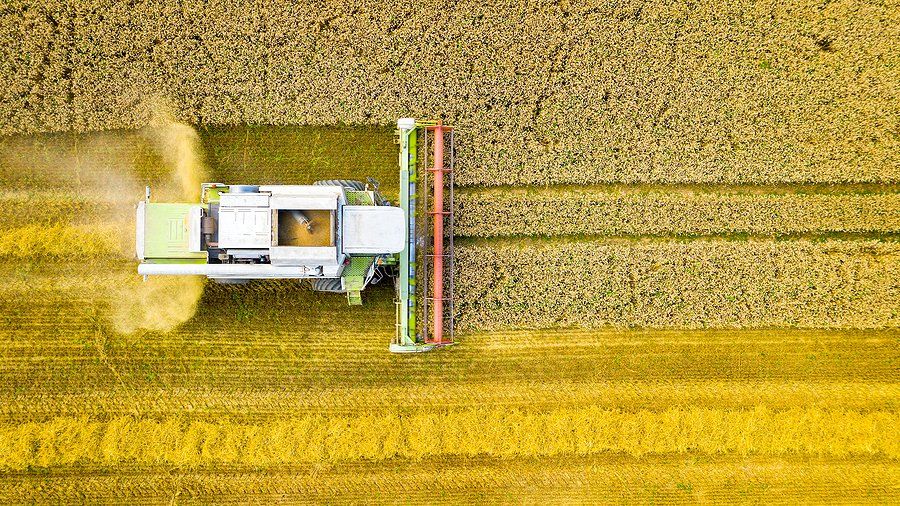News Articles
In the Federal Budget earlier this year, the former government announced plans to apply concessional tax treatment to primary producers that generate revenue from the sale of Australian Carbon Credit Units (ACCUs) and biodiversity certificates. The changes aim to encourage “carbon farming” activities and help Australian governments meet their emissions targets.
The new Labor Government, is aiming to reduce emissions by 43 per cent below 2005 levels by 2030.
Recognising the part agriculture must play in reducing emissions, many industry bodies have also created their targets. The National Farmers Federation (NFF) and Grain Growers Australia, for instance, are aiming for net-zero emissions by 2050, and Meat and Livestock Australia (MLA) is striving for net zero by 2030.
Tax savings in carbon farming
Apart from encouraging greener agricultural processes, the Federal Government expects it is expected the concessional tax changes will provide farmers with an estimated $100 million benefit through the tax system over the forward estimates1.
Under the new tax regime, farmers will treat revenue from the sale of ACCUs as primary production income, providing access to income tax averaging arrangements and the Farm Management Deposit scheme. Revenue from ACCUs will be recognised in the year of sale to support cash flow. The treatment of biodiversity certificates will be aligned with the new tax regime for ACCUs.
The Government believes the changes will further encourage carbon abatement and biodiversity activities while providing primary producers with a diversified source of on-farm income.
The goal is to give genuine farmers more options when deciding to hold or sell their credits—whether for investment purposes or to enhance the environmental credentials of their operations—without being penalised.
The Government said the changes would also encourage more farmers to participate in the Emissions Reduction Fund (ERF) and earn revenue from ERF projects.
According to Leanne Sherriff, Climate Change Leader from agribusiness consulting and grain marketing firm Pinion Advisory, trading carbon may provide an opportunity for a long-term sustainable income stream. Leanne says, “There is potential to generate income from low production land, allocating the most sustainable use for all land types.” However, there are risks associated with trading carbon and farmers should ensure that they have thoroughly done their homework to see whether trading carbon is the right fit for them and their business. Carbon farming projects are for a minimum period of 25 years, and carbon cannot be double counted (i.e. the same carbon can’t be used as a tradable commodity and to offset emissions from the farm business as well).
What is carbon farming?
According to Carbon Famers of Australia2, carbon farming is simply a way of farming that reduces greenhouse gas emissions or captures and holds (also called “sequestration”) carbon in vegetation and soils. It is managing land, water, plants, and animals to meet the treble of challenges: “landscape restoration”, “climate change”, and “food security”. Carbon farming aims to trim down emissions from agricultural production processes while increasing production and sequestering carbon in the landscape.
For those unfamiliar with carbon sequestration, this refers to capturing and storing atmospheric carbon dioxide. It is one way of cutting the amount of carbon dioxide in the atmosphere to reduce global climate change3.
The benefits of carbon farming and carbon sequestration include less erosion and soil loss, improved soil structure and fertility, lower soil salinity, healthier soils, vegetation, and animals. Other benefits include more biodiversity, buffering against drought and greater water efficiency.
Carbon farming ranges from a single change in land management, such as introducing no-till cultivation or grazing management, to a whole-of-farm integrated plan which maximises carbon capture and emissions reduction. Carbon Farmers of Australia says farmers have many practices to choose from to develop a compliant land management plan, including:
- maximum groundcover (no bare earth),
- pasture cropping,
- mulching,
- stubble retention,
- precision application (fertiliser),
- natural fertilisers,
- soil inoculants (probiotics),
- low methane animal genetics,
- methane-reducing feed supplements, and
- manure management4.
The most common methods landholders or farmers use to create ACCUs is by avoiding deforestation, revegetation, and soil carbon sequestration.

Creating Australian carbon credit units
The Federal Governments’ Clean Energy Regulator creates and regulates the methods under which anyone can generate ACCUs.
According to Hamish Webb, a Director and Interim CEO of Precision Pastures and a sheep and cattle farmer based in the New England region of NSW, “The most common methods landholders or farmers use to create ACCUs is by avoiding deforestation, revegetation, and soil carbon sequestration.”
“Soil carbon sequestration is structurally different. The method is measured, not modelled, which requires the landholders to undertake soil tests with accredited organisations to provide measurements of the carbon that has been sequestered.”
Hamish continues, “This measured approach is highly accurate and is ranked number one in global standards for soil carbon methods. It also provides the added benefit of providing the farmer with soil data which can be used to solve soil health issues or constraints and ultimately increase farm production.”
The benefits of green farming and getting the right advice
"The main advantage of conducting a soil carbon project," says Hamish, "is the potential alignment of eligible project activities with improvements in on-farm production."
“These activities include applying fertiliser (organic or synthetic), lime or gypsum, implementing irrigation, rejuvenating pastures with seed, or switching from set stocking to rotation grazing." According to Hamish, "many farmers are already embracing these activities as part of their program, so it is vital to understand your current carbon levels and the potential cost-benefit analysis for undertaking a soil carbon project.”
“Given the increasing demand for carbon-friendly products this is an important consideration. It’s critical for farmers to know their own carbon balance before they commit to selling,” explains Leanne Sherriff, Climate Change Leader, Pinon Advisory. Whatever pathway farmers take, managing for carbon delivers clear on-farm environmental and production benefits and provides opportunity to improve business resilience. Examples of on-farm co-benefits include healthier soils with improved water holding capacity, shelter, and shade for stock and improved biodiversity.
Hamish adds that apart from the benefits of carbon farming to an agribusiness, it’s essential to get the accounting and financial side of the ledger right too. “It is important to consider the project ownership structure, your potential developers or partners and the strategy to monetise the ACCUs once they are issued. Engaging with your trusted advisers, including accountants, is very important during this process. Engaging with your trusted advisers, including accountants, is very important during this process," said Hamish.
Discuss Further?
If you would like to discuss, please get in touch.
Disclaimer
The information provided in this article does not constitute advice. The information is of a general nature only and does not take into account your individual financial situation. It should not be used, relied upon, or treated as a substitute for specific professional advice. We recommend that you contact Brentnalls SA before making any decision to discuss your particular requirements or circumstances.







